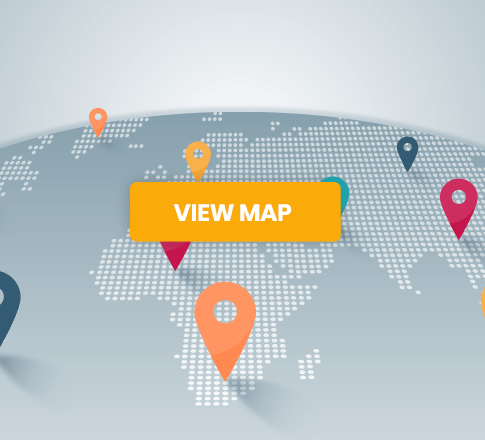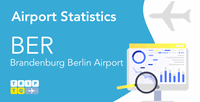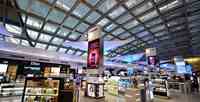DUBLIN AIRPORT (DUB) INFORMATION
| Origin | Airline | Flight no. | Scheduled | Est./Actual | Status |
|---|---|---|---|---|---|
|
...
|
|||||
| Destination | Airline | Flight no. | Scheduled | Est./Actual | Status |
|---|---|---|---|---|---|
|
...
|
|||||
![car-icon]() Car Hire at Dublin Airport
Car Hire at Dublin Airport




Dublin Airport - All Information on Dublin Airport (DUB)


Dublin Airport
Dublin County, Republic of IrelandFacts and History about Dublin Airport

Dublin Airport is a large, international airport found approximately 10km, or 6.2 miles north of Dublin city. It's traffic figures are recorded at over eighteen million per annum, with makes it the busiest destination in Ireland, including Northern Ireland, and one of the tenth busiest in Europe for international traffic. The location is allocated the IATA code of DUB in order to distinguish it from similar establishments, and it's ICAO code is listed as EIDW. It serves the city of Dublin, and many other surrounding areas, and there are a large number of airline carriers in operation from the terminal buildings. The airport facilities and transport options are extensive as well, including a large selection of car rental companies at Dublin airport.
Dublin Airport is located in Collinstown, in the county of Fingal, Ireland, and is just south of Swords. It is also particularly nearby the areas of Forrest Little, Marshallstown, Cloghran, Ashbourne, Newtown and Silloge. The motorway closest to the airport is the M1, providing access from Dublin city and from areas to the north as far as Belfast in Northern Ireland (United Kingdom). From Belfast the M1 passes the areas of Lisburn, Newry, Dundalk, Drogheda and Swords. It is also linked to the M50 ring road of Dublin city, from where many other main roads branch out to various areas of Ireland. To the north-west of the airport is Navan and Kells, accessed by the M3, to the west is Maynooth, Kinnegad, Athlone and Galway, along the M5 and M6 and to the south and southwest are the areas of Portlaoise, Kilkenny, Thurles, Killarney, Cork, Waterford, Wexford, Gorey, Wicklow, Greystones and Dun Laoghaire, with the N11, M9, M8 and M7 leading towards Dublin.
Private vehicles can be used to reach a departure flight, as the parking facilities available are extensive. There are thousands of spaces in both short-term and long-term parking lots, and almost a hundred reserved spaces for disabled passengers. Around 700 buses also travel to the airport from many of the above mentioned areas, from Dublin city center and from the Connolly Train Station and the Heuston Train Station. Unfortunately, at present, the plans for a direct rail link from Dublin to Swords has been postponed. It would have been an underground service known as the Metro North line. Taxis are available from and to the airport, serving areas within a radius of thirty kilometers.
The airport's current facilities include two passenger terminals and one main runway. There is also another runway, but this one is closed to allow over-spill aircraft parking. It is the oldest runway and also the shorter of the two. In future years it will disappear under the new runway which is planned to be built parallel to the main runway, at a length of 3,110 meters (or possibly even 3.660 meters), adequate for long-haul carriers and enabling direct flights from Dublin to the Far East. The new runway will accommodate up to thirty million passengers per annum once in operation. In 2008 the Dublin Airport Authority (DAA), the sites management company, announced that the new runway will only be possible in a few years time due to the need to cut costs. The main 10/28 runway measures 2,637 meters in length, and is made of concrete. Further developments planned for the near future include a new air traffic control complex and control tower, since that the new runway will obstruct visibility of certain parts of the airport from the existing control tower.
Over recent years the airport of Dublin became congested, and the need for a new terminal was imminent. Even though many extensions were made to Terminal 1 over the years, it's infrastructure was insufficient to handle the volume of passengers. This brought about the construction of Terminal 2, a 75,000 square meter terminal with the capacity to handle up to fifteen million passengers per annum and designed to cope with short and long-haul flights. The plans for the building of Terminal 2 were under much criticism, as it was stated that due to it's location it also could not be further expanded to provide additional capacity. The airline company of Ryanair also wanted the terminal to be a low-cost facility, and run by a competing operator. However, Terminal 2 was decided to be operated by the DAA. The terminal was completed in 2010, and cost 395 million Euro. A new pier (Pier E) was also constructed perpendicular to the terminal, with boarding gates 401 to 426, and a new multi-storey car parking area for Terminal 2 passengers. Provision of sites have been made for a new ground transportation center and a metro station which could be part of the airport's future developments. A third terminal could also be built between the parallel runways, and another pier (Pier F) is to be constructed when needed to the south of Terminal 2.
Terminal 2 is home to the airline company of Aer Lingus, and others operating long-haul flights, including Etihad Airways, United Airways, Emirates, American Airlines and Delta Air Lines. Terminal 1 has been in existence since 1972, and back then it was capable of processing just five million passengers per year. Pier A was the first extension made for Terminal 1, and this section was again expanded in the 1990's. Next, a new pier named as Pier C was built, featuring air bridges, and upon it's completion, work immediately began to double it's capacity. The original terminal's ground floor was also re-opened to provide additional departure gates. The latest development for Terminal 1 is Pier D, opened in October 2007, and is a dedicated area to the north of the terminal for the low-cost airline company of Ryanair. It features fourteen quick turn-around stands and departure gates which are not served by air bridges. Pier D is linked to Terminal 1 by an elevated Skybridge, which provides passengers with magnificent views of the airport activities. Terminal 1, for short-haul flights, is home to the following airline companies and more: Aer Arran, Aer Lingus Regional, Air Canada, Air France, Air Transat, BMI, Blue Air, Flybe, Germania, Iberia, Lufthansa and Lufthansa Regional, Norwegian Air Shuttle, Ryanair, Scandinavian Airlines and Thomson Airways.
Dublin Airport saw a record breaking year in 2018 with over 31.3 Million passengers flying in and out of the Airport. Passenger numbers were up 1.9M a 6% increase on the previous year. North American passengers increased by 16% to a record 4 Million, with Continental Europe figures coming in with a 7% increase (16.3 Million).
A great change in the airport's procedures regarding flights to the United States came about in March 2007, when the Open Skies agreement was relinquished. For years flights to the U.S. had to make a "Shannon Stopover", as the Irish government insisted that fifty percent of transatlantic flights to this country must pass through Shannon Airport, located on the west coast of Ireland. The agreement started to lose it's significance in 1993, when a new bilateral agreement was signed enabling some direct transatlantic activities. The agreement was further diminished in 2006 when more direct flights were allowed, and by 2008, flights from Dublin could operate freely, without the need to match those to and from Shannon. Dublin is also only one of two airports that are not located within North America with United States border pre-clearance services for passengers on flights heading to the U.S.
The airports facilities are extensive, and include all services required by arrivals and departures in terms of banking, business, shopping, catering, children and disabled persons. Both terminals are very well equipped, and the need to transfer between terminals is only occasionally required. Further information is available from the Dublin Airport Switchboard, at +353 (0)1 814 1111. An email address which can be used is information.queries@daa.ie.
The Air Transport Association (IATA) code for Dublin Airport is DUB. We have provided the GPS location which are as follows 53.43333, -6.25000 to help either your arrival directions or perhaps give you directions from the airport to your chosen destination.
Hotels near Dublin Airport
There are a number of hotels to suit all budgets and requirements at or near Dublin Airport.
Things to do in Dublin City
There are a number of activities to suit all ages and interests in the region - see a selection of tourist activities in Dublin City, Ireland.
Additional Services and Amenities at Dublin Airport
At Dublin Airport you will find the usual array of bars and restaurants, airport lounges and shops.
- See all bars and restaurants inside Dublin Airport
- See and book airport lounges at Dublin Airport
- Plan your shopping in advance - see all the shops (including duty-free) at Dublin Airport
Services at Dublin Airport
- airplanemode_activeFlights
- drive_etaCar Hire
- airport_shuttleAirport Transfers
- local_parkingParking
- local_hotelHotels
Useful Information about Dublin Airport

Dublin Airport in Ireland experienced a noteworthy milestone with a 0.67% increase in passenger numbers compared to August 2019, the pre-pandemic year. The airport recorded 3,419,986 passengers during the third year after the global pandemic...
View...
See all the airport lounges, locations and opening times available at Dublin Airport
View...
See all bars and restaurants at Dublin Airport, including locations and if they are before or after check-in
View...
See all shops available at Dublin Airport - plan your duty free shopping in advance
View...